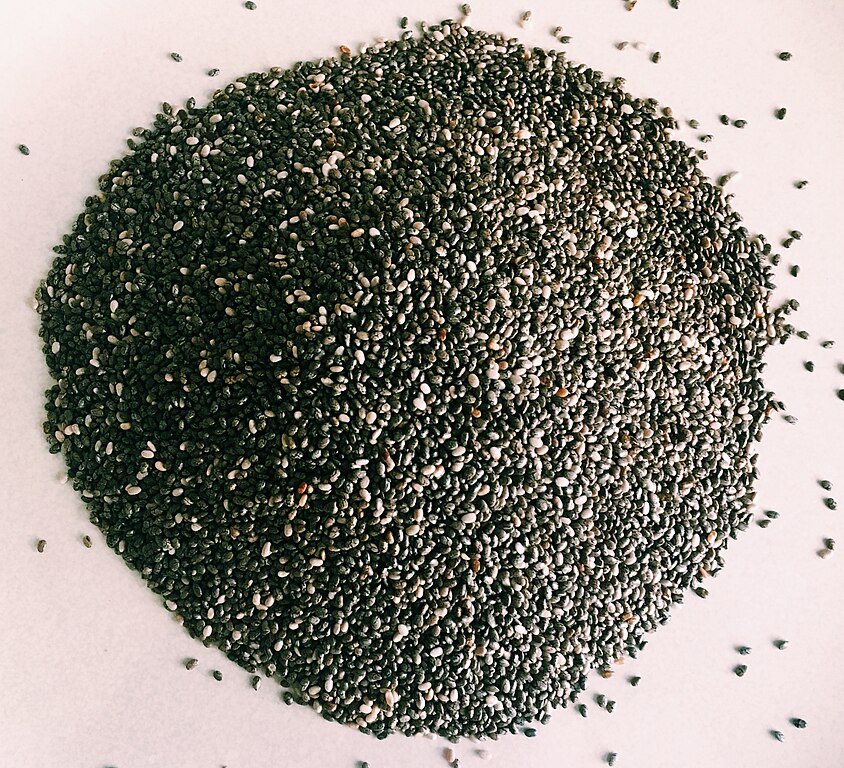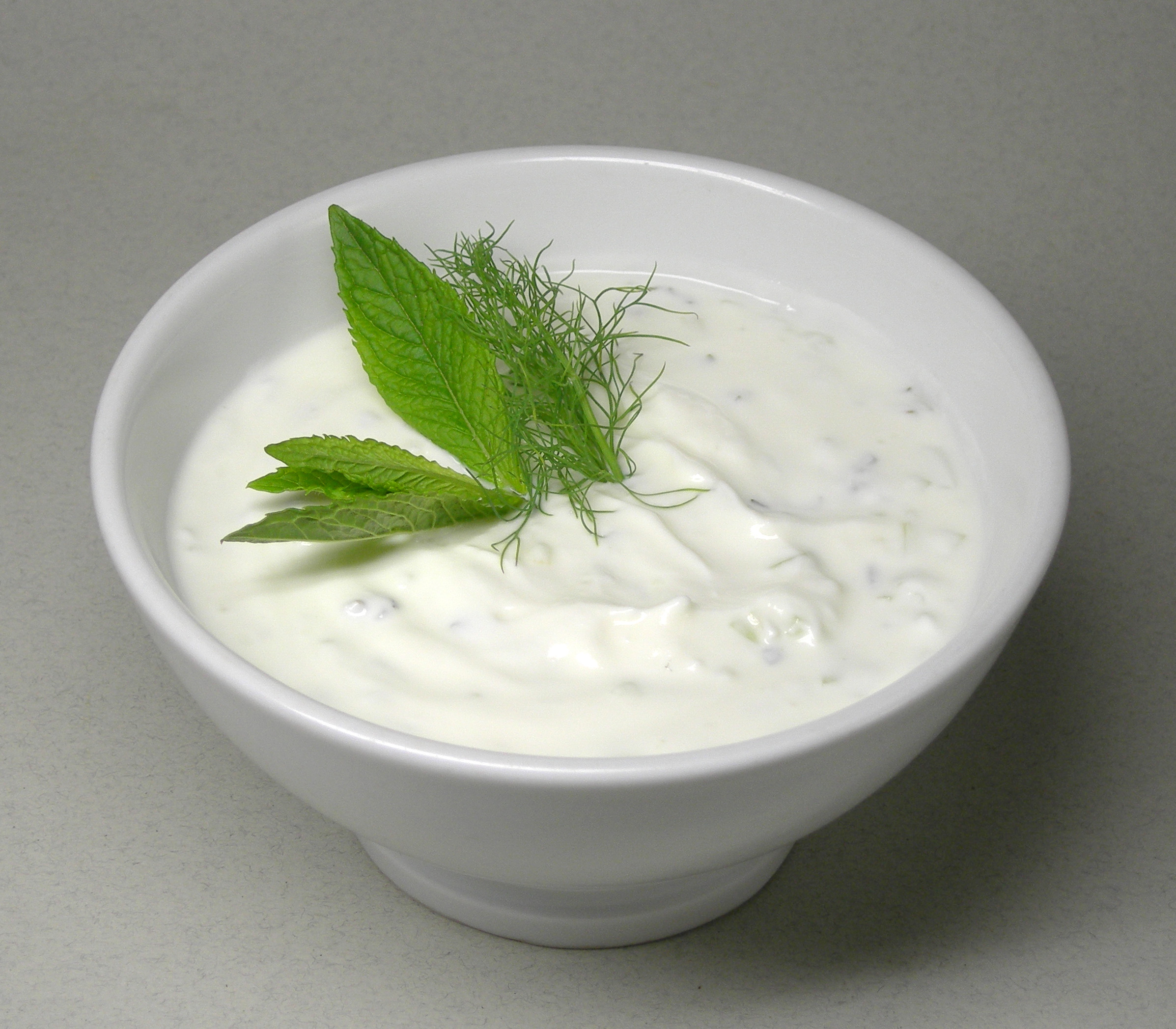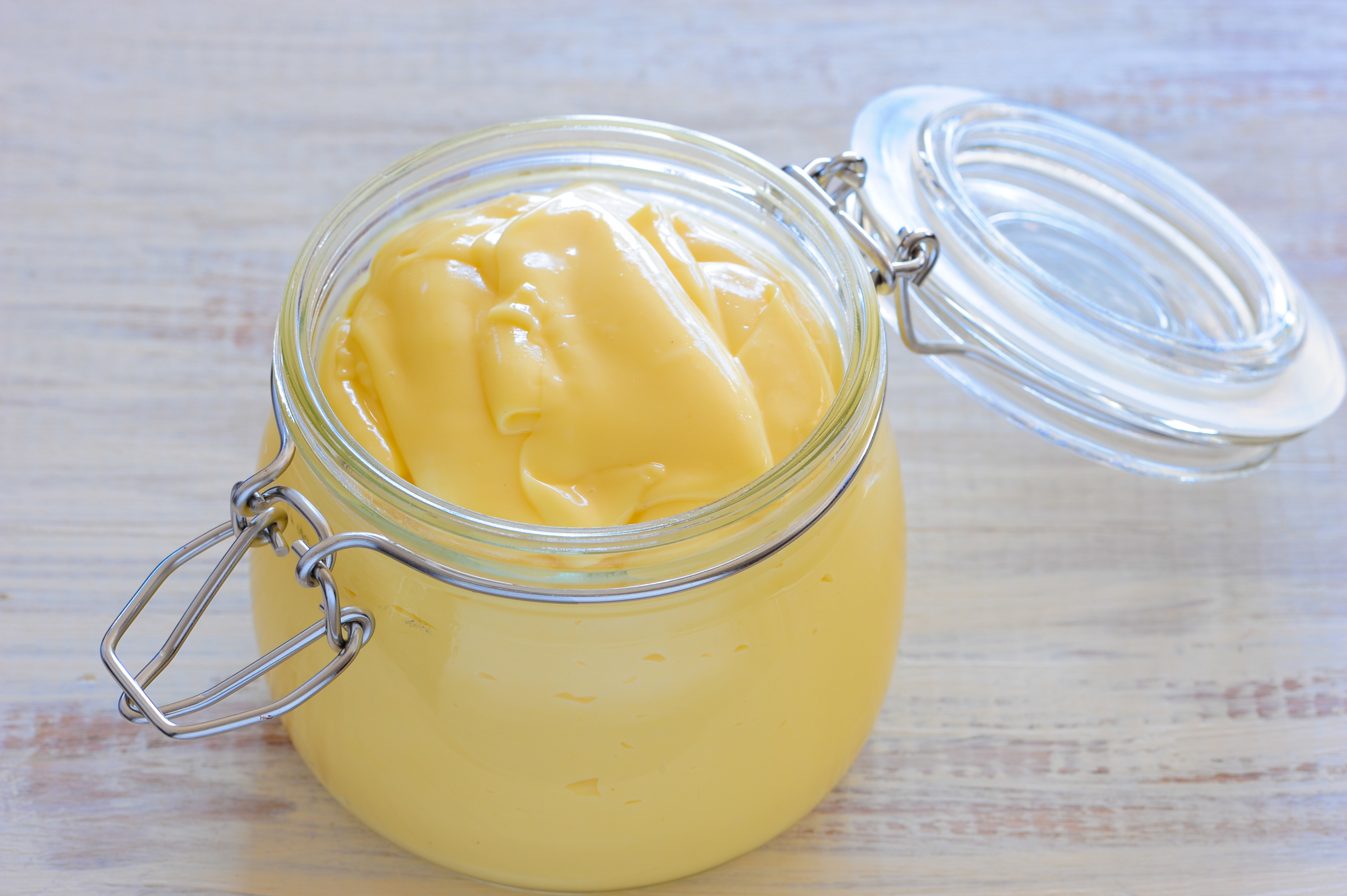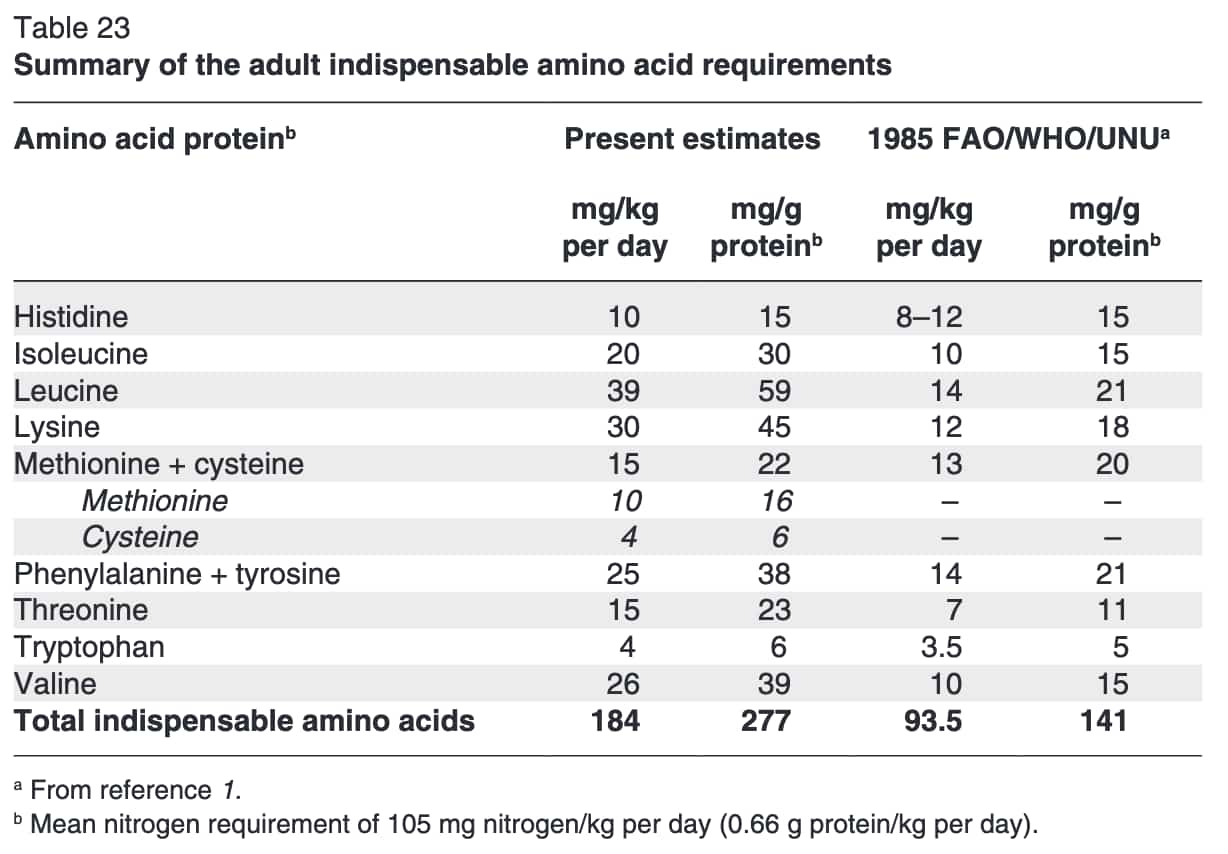16 Complete Protein Pairings with Peanut Flour
Summary:
- Peanut flour is high in protein - about 31.3 grams per cup.
- However, peanut flour provides only 7 of the 9 essential amino acids sufficiently - it is a little low on lysine and methionine.[1]
- Peanut flour pairs well with carrots, crimini mushroom, pumpkin seeds, chia seeds or hedge mustard seeds to create a complete protein profile. [2] More peanut flour pairings and detailed analysis below.
A complete protein is a protein source that "contains adequate proportions of the nine essential amino acids" that our body can not produce on its own.
We analyzed the amino acid composition of peanut flour, and found both vegan and vegetarian pairings with peanut flour that creates a complete protein profile. Read on to discover new combinations of foods to enjoy!
Details on how we calculate complete protein profiles.
Amount of Protein in Peanut Flour
A great source of protein, a single cup of peanut flour contains 31.3 grams of protein, or about 63% of recommended daily values. [1]
To get the adequate amount of protein with peanut flour alone, you will need 1.6 cups of peanut flour (96 grams) for an average female, or 1.9 cups of peanut flour for males. [4] That's about 313 calories.
Full nutritional profile for peanut flour
USDA Source: Peanut flour, defatted
Macronutrients in 1 cup (60g) of peanut flour:
| % of RDV | Amount | ||
| Calories |
|
9.8% | 196 kCal |
| Carbohydrates |
|
0% | - |
| Total fat |
|
0.5% | 0.3 grams |
| Protein |
|
62.6% | 31.3 grams |
Essential Amino Acids in Peanut Flour
Peanut flour contains abundant amounts of 7 out of the nine essential amino acids. Proportionally, peanut flour is a little short on lysine and methionine.[1]
To have adequate amounts of all nine essential amino acids with peanut flour alone, you will have to eat 2.2 cups of peanut flour (134 grams) for an average person. [2]
That's about 40% more peanut flour to compensate for the lack of lysine and methionine, compared to the protein requirement alone.
The amount of each essential amino acid in 1 cup (60g) of peanut flour:
| Amino Acid | % of RDV [2] | Amount [1] |
Complete / Adequate |
|
| Protein |
|
62.6% | 31.32g | |
| Histidine |
|
125.6% | 0.791g | |
| Isoleucine |
|
128.1% | 1.102g | |
| Leucine |
|
107.4% | 2.03g | |
| Lysine |
|
65.8% | 1.124g | |
| Methionine |
|
44.7% | 0.385g | |
| Phenylalanine |
|
108.9% | 1.623g | |
| Threonine |
|
119.2% | 1.073g | |
| Tryptophan |
|
117% | 0.304g | |
| Valine |
|
121.6% | 1.313g |
More Complete Protein with Peanut Flour
- Carrots
- Crimini Mushroom
- Pumpkin Seeds
- Chia Seeds
- Hedge Mustard Seeds
- Yellow Mustard
- Dijon Mustard
- Avocado
- Wheat Germ
- Chestnut
- Lotus Seeds
Vegan 1. Carrots and Peanut Flour


Low in protein, carrot is high in lysine and methionine, which is complementary to peanut flour.
A ratio of 1.3 tablespoons of peanut flour (5g) and 2.6 carrots (189g) creates a complete protein profile. In fact, any ratio of more than 38:1 of carrot to peanut flour will be complete.
Full nutritional profile for carrots
USDA Source: Carrots, raw
| Amino Acid | % of RDV [2] | Amount [5] |
Complete / Adequate |
|
| Protein |
|
8.6% | 4.3g | |
| Histidine |
|
22.3% | 0.14g | |
| Isoleucine |
|
27.4% | 0.24g | |
| Leucine |
|
19% | 0.36g | |
| Lysine |
|
16.5% | 0.28g | |
| Methionine |
|
8.1% | 0.07g | |
| Phenylalanine |
|
16.7% | 0.25g | |
| Threonine |
|
49.8% | 0.45g | |
| Tryptophan |
|
18.3% | 0.05g | |
| Valine |
|
22% | 0.24g |
Vegan 2. Crimini Mushroom and Peanut Flour


Crimini mushroom is a reasonable source of supplementary protein, and is high in lysine and methionine, complementing the profile of peanut flour.
For example, 1.8 tablespoons of peanut flour (7g) and 1.9 cups of crimini mushroom (169g) make a complete amino acids profile. In fact, any ratio of more than 25:1 of crimini mushroom to peanut flour will be complete.
Full nutritional profile for crimini mushroom
USDA Source: Mushrooms, brown, italian, or crimini, raw
| Amino Acid | % of RDV [2] | Amount [6] |
Complete / Adequate |
|
| Protein |
|
15.7% | 7.8g | |
| Histidine |
|
32.4% | 0.2g | |
| Isoleucine |
|
34.2% | 0.29g | |
| Leucine |
|
26% | 0.49g | |
| Lysine |
|
32.5% | 0.56g | |
| Methionine |
|
14.6% | 0.13g | |
| Phenylalanine |
|
23.5% | 0.35g | |
| Threonine |
|
34.9% | 0.31g | |
| Tryptophan |
|
49.9% | 0.13g | |
| Valine |
|
32% | 0.35g |
Vegan 3. Pumpkin Seeds and Peanut Flour


A reasonable source of supplementary protein, pumpkin seed is high in lysine and methionine, which is complementary to peanut flour.
A ratio of 3.1 tablespoons of peanut flour (12g) and 0.3 cup of pumpkin seeds (19g) creates a complete protein profile. In fact, any ratio of more than 1.6:1 of pumpkin seed to peanut flour will be complete.
Full nutritional profile for pumpkin seeds
USDA Source: Seeds, pumpkin and squash seeds, whole, roasted, without salt
| Amino Acid | % of RDV [2] | Amount [7] |
Complete / Adequate |
|
| Protein |
|
19% | 9.5g | |
| Histidine |
|
39.5% | 0.25g | |
| Isoleucine |
|
45.5% | 0.39g | |
| Leucine |
|
36.3% | 0.69g | |
| Lysine |
|
27.9% | 0.48g | |
| Methionine |
|
17.7% | 0.15g | |
| Phenylalanine |
|
32.6% | 0.49g | |
| Threonine |
|
37.2% | 0.33g | |
| Tryptophan |
|
46.1% | 0.12g | |
| Valine |
|
49.3% | 0.53g |
Vegan 4. Chia Seeds and Peanut Flour


Chia seed is a reasonable source of supplementary protein, and is high in lysine and methionine, complementing the profile of peanut flour.
For example, 2.4 tablespoons of peanut flour (9g) and 0.7 ounce of chia seeds (19g) make a complete amino acids profile. In fact, any ratio of more than 2.1:1 of chia seed to peanut flour will be complete.
Full nutritional profile for chia seeds
USDA Source: Seeds, chia seeds, dried
| Amino Acid | % of RDV [2] | Amount [8] |
Complete / Adequate |
|
| Protein |
|
15.7% | 7.8g | |
| Histidine |
|
34.8% | 0.22g | |
| Isoleucine |
|
36.9% | 0.32g | |
| Leucine |
|
29.9% | 0.56g | |
| Lysine |
|
20.6% | 0.35g | |
| Methionine |
|
19.8% | 0.17g | |
| Phenylalanine |
|
29.3% | 0.44g | |
| Threonine |
|
32.8% | 0.3g | |
| Tryptophan |
|
49.5% | 0.13g | |
| Valine |
|
34.9% | 0.38g |
Vegan 5. Hedge Mustard Seeds and Peanut Flour


A reasonable source of supplementary protein, hedge mustard seed is high in lysine and methionine, which is complementary to peanut flour.
A ratio of 3.4 tablespoons of peanut flour (13g) and 0.3 cup of hedge mustard seeds (24g) creates a complete protein profile. In fact, any ratio of more than 1.8:1 of hedge mustard seed to peanut flour will be complete.
Full nutritional profile for hedge mustard seeds
USDA Source: Seeds, sisymbrium sp. seeds, whole, dried
| Amino Acid | % of RDV [2] | Amount [9] |
Complete / Adequate |
|
| Protein |
|
19.1% | 9.5g | |
| Histidine |
|
38.9% | 0.25g | |
| Isoleucine |
|
45.1% | 0.39g | |
| Leucine |
|
38.2% | 0.72g | |
| Lysine |
|
25.1% | 0.43g | |
| Methionine |
|
18% | 0.16g | |
| Phenylalanine |
|
32.4% | 0.48g | |
| Threonine |
|
43.4% | 0.39g | |
| Tryptophan |
|
49% | 0.13g | |
| Valine |
|
41.3% | 0.45g |
Vegan 6. Yellow Mustard and Peanut Flour


Yellow mustard is a reasonable source of supplementary protein, and is high in lysine and methionine, complementing the profile of peanut flour.
For example, 3 tablespoons of peanut flour (11g) and 9.2 tablespoons of yellow mustard (138g) make a complete amino acids profile. In fact, any ratio of more than 12:1 of yellow mustard to peanut flour will be complete.
Full nutritional profile for yellow mustard
USDA Source: Mustard, prepared, yellow
| Amino Acid | % of RDV [2] | Amount [10] |
Complete / Adequate |
|
| Protein |
|
22.1% | 11.1g | |
| Histidine |
|
49.8% | 0.31g | |
| Isoleucine |
|
47.6% | 0.41g | |
| Leucine |
|
41.6% | 0.79g | |
| Lysine |
|
33.7% | 0.58g | |
| Methionine |
|
20.6% | 0.18g | |
| Phenylalanine |
|
35.5% | 0.53g | |
| Threonine |
|
48.1% | 0.43g | |
| Tryptophan |
|
26.8% | 0.07g | |
| Valine |
|
47.1% | 0.51g |
Vegan 7. Dijon Mustard and Peanut Flour


A great source of protein, dijon mustard is high in lysine and methionine, which is complementary to peanut flour.
A ratio of 2.1 tablespoons of peanut flour (8g) and 4 tablespoons of dijon mustard (24g) creates a complete protein profile. In fact, any ratio of more than 3:1 of dijon mustard to peanut flour will be complete.
Full nutritional profile for dijon mustard
USDA Source: Spices, mustard seed, ground
| Amino Acid | % of RDV [2] | Amount [11] |
Complete / Adequate |
|
| Protein |
|
20.6% | 10.3g | |
| Histidine |
|
49.7% | 0.31g | |
| Isoleucine |
|
49.6% | 0.43g | |
| Leucine |
|
40.3% | 0.76g | |
| Lysine |
|
34.3% | 0.59g | |
| Methionine |
|
19.2% | 0.17g | |
| Phenylalanine |
|
33% | 0.49g | |
| Threonine |
|
37.8% | 0.34g | |
| Tryptophan |
|
38.7% | 0.1g | |
| Valine |
|
49.2% | 0.53g |
Vegan 8. Avocado and Peanut Flour


Avocado is low in protein, and is high in lysine and methionine, complementing the profile of peanut flour.
For example, 2.4 tablespoons of peanut flour (9g) and 2.3 avocado (314g) make a complete amino acids profile. In fact, any ratio of more than 35:1 of avocado to peanut flour will be complete.
Full nutritional profile for avocado
USDA Source: Avocados, raw, California
| Amino Acid | % of RDV [2] | Amount [12] |
Complete / Adequate |
|
| Protein |
|
21.8% | 10.9g | |
| Histidine |
|
42.9% | 0.27g | |
| Isoleucine |
|
49.7% | 0.43g | |
| Leucine |
|
39.7% | 0.75g | |
| Lysine |
|
33.6% | 0.57g | |
| Methionine |
|
20.3% | 0.17g | |
| Phenylalanine |
|
36.5% | 0.54g | |
| Threonine |
|
43.1% | 0.39g | |
| Tryptophan |
|
48% | 0.12g | |
| Valine |
|
48.9% | 0.53g |
Vegan 9. Wheat Germ and Peanut Flour


A great source of protein, wheat germ is high in lysine and methionine, which is complementary to peanut flour.
A ratio of 2.8 tablespoons of peanut flour (11g) and 3.4 tablespoons of wheat germ (24g) creates a complete protein profile. In fact, any ratio of more than 2.3:1 of wheat germ to peanut flour will be complete.
Full nutritional profile for wheat germ
USDA Source: Wheat germ, crude
| Amino Acid | % of RDV [2] | Amount [13] |
Complete / Adequate |
|
| Protein |
|
22.1% | 11.1g | |
| Histidine |
|
46.7% | 0.29g | |
| Isoleucine |
|
46.2% | 0.4g | |
| Leucine |
|
38.9% | 0.74g | |
| Lysine |
|
32.2% | 0.55g | |
| Methionine |
|
20.6% | 0.18g | |
| Phenylalanine |
|
34.1% | 0.51g | |
| Threonine |
|
46.8% | 0.42g | |
| Tryptophan |
|
49.9% | 0.13g | |
| Valine |
|
48% | 0.52g |
Vegan 10. Chestnut and Peanut Flour


Chestnut is a reasonable source of supplementary protein, and is high in lysine and methionine, complementing the profile of peanut flour.
For example, 3.5 tablespoons of peanut flour (13g) and 1 cup of chestnut (138g) make a complete amino acids profile. In fact, any ratio of more than 11:1 of chestnut to peanut flour will be complete.
Full nutritional profile for chestnut
USDA Source: Nuts, chestnuts, european, roasted
| Amino Acid | % of RDV [2] | Amount [14] |
Complete / Adequate |
|
| Protein |
|
22.4% | 11.2g | |
| Histidine |
|
46.6% | 0.29g | |
| Isoleucine |
|
47.9% | 0.41g | |
| Leucine |
|
37.1% | 0.7g | |
| Lysine |
|
29.5% | 0.5g | |
| Methionine |
|
21.8% | 0.19g | |
| Phenylalanine |
|
36.1% | 0.54g | |
| Threonine |
|
43.2% | 0.39g | |
| Tryptophan |
|
43.9% | 0.11g | |
| Valine |
|
49.2% | 0.53g |
Vegan 11. Lotus Seeds and Peanut Flour


A reasonable source of supplementary protein, lotus seed is high in lysine and methionine, which is complementary to peanut flour.
A ratio of 1.2 tablespoons of peanut flour (5g) and 1.4 cups of lotus seeds (44g) creates a complete protein profile. In fact, any ratio of more than 10:1 of lotus seed to peanut flour will be complete.
Full nutritional profile for lotus seeds
USDA Source: Seeds, lotus seeds, dried
| Amino Acid | % of RDV [2] | Amount [15] |
Complete / Adequate |
|
| Protein |
|
18.3% | 9.2g | |
| Histidine |
|
39.6% | 0.25g | |
| Isoleucine |
|
48.9% | 0.42g | |
| Leucine |
|
36.5% | 0.69g | |
| Lysine |
|
30.4% | 0.52g | |
| Methionine |
|
17.1% | 0.15g | |
| Phenylalanine |
|
30.9% | 0.46g | |
| Threonine |
|
45.6% | 0.41g | |
| Tryptophan |
|
46.2% | 0.12g | |
| Valine |
|
49.7% | 0.54g |
Vegetarian 12. Sour Cream and Peanut Flour


Sour cream is a reasonable source of supplementary protein, and is high in lysine and methionine, complementing the profile of peanut flour.
For example, 0.3 cup of peanut flour (16g) and 0.4 cup of sour cream (79g) make a complete amino acids profile. In fact, any ratio of more than 5:1 of sour cream to peanut flour will be complete.
Full nutritional profile for sour cream
USDA Source: Cream, sour, cultured
| Amino Acid | % of RDV [2] | Amount [16] |
Complete / Adequate |
|
| Protein |
|
20.4% | 10.2g | |
| Histidine |
|
44.6% | 0.28g | |
| Isoleucine |
|
48.7% | 0.42g | |
| Leucine |
|
41.8% | 0.79g | |
| Lysine |
|
30.1% | 0.51g | |
| Methionine |
|
19% | 0.16g | |
| Phenylalanine |
|
37% | 0.55g | |
| Threonine |
|
43.9% | 0.39g | |
| Tryptophan |
|
43.6% | 0.11g | |
| Valine |
|
46.3% | 0.5g |
Vegetarian 13. Caramel and Peanut Flour


Low in protein, caramel is high in lysine and methionine, which is complementary to peanut flour.
A ratio of 0.3 cup of peanut flour (15g) and 0.5 cup of caramel (167g) creates a complete protein profile. In fact, any ratio of more than 11:1 of caramel to peanut flour will be complete.
Full nutritional profile for caramel
USDA Source: Toppings, butterscotch or caramel
| Amino Acid | % of RDV [2] | Amount [17] |
Complete / Adequate |
|
| Protein |
|
19.7% | 9.8g | |
| Histidine |
|
42% | 0.26g | |
| Isoleucine |
|
49.3% | 0.42g | |
| Leucine |
|
39.5% | 0.75g | |
| Lysine |
|
27.8% | 0.48g | |
| Methionine |
|
18.4% | 0.16g | |
| Phenylalanine |
|
35.2% | 0.52g | |
| Threonine |
|
42% | 0.38g | |
| Tryptophan |
|
29.3% | 0.08g | |
| Valine |
|
45.5% | 0.49g |
Vegetarian 14. Yogurt and Peanut Flour


Yogurt is a reasonable source of supplementary protein, and is high in lysine and methionine, complementing the profile of peanut flour.
For example, 0.3 cup of peanut flour (16g) and 0.3 cup of yogurt (67g) make a complete amino acids profile. In fact, any ratio of more than 4:1 of yogurt to peanut flour will be complete.
Full nutritional profile for yogurt
USDA Source: Yogurt, plain, whole milk
| Amino Acid | % of RDV [2] | Amount [18] |
Complete / Adequate |
|
| Protein |
|
21.1% | 10.6g | |
| Histidine |
|
42.2% | 0.27g | |
| Isoleucine |
|
48.4% | 0.42g | |
| Leucine |
|
40.6% | 0.77g | |
| Lysine |
|
29.4% | 0.5g | |
| Methionine |
|
19.7% | 0.17g | |
| Phenylalanine |
|
37.1% | 0.55g | |
| Threonine |
|
41.9% | 0.38g | |
| Tryptophan |
|
35.9% | 0.09g | |
| Valine |
|
49.7% | 0.54g |
Vegetarian 15. Mayonnaise and Peanut Flour


Low in protein, mayonnaise is high in lysine and methionine, which is complementary to peanut flour.
A ratio of 3.9 tablespoons of peanut flour (15g) and 1.1 cups of mayonnaise (244g) creates a complete protein profile. In fact, any ratio of more than 17:1 of mayonnaise to peanut flour will be complete.
Full nutritional profile for mayonnaise
USDA Source: Salad dressing, mayonnaise, regular
| Amino Acid | % of RDV [2] | Amount [19] |
Complete / Adequate |
|
| Protein |
|
20% | 10g | |
| Histidine |
|
40.7% | 0.26g | |
| Isoleucine |
|
49.7% | 0.43g | |
| Leucine |
|
38.5% | 0.73g | |
| Lysine |
|
26.3% | 0.45g | |
| Methionine |
|
20.8% | 0.18g | |
| Phenylalanine |
|
35.9% | 0.53g | |
| Threonine |
|
44% | 0.4g | |
| Tryptophan |
|
44.5% | 0.12g | |
| Valine |
|
46.4% | 0.5g |
